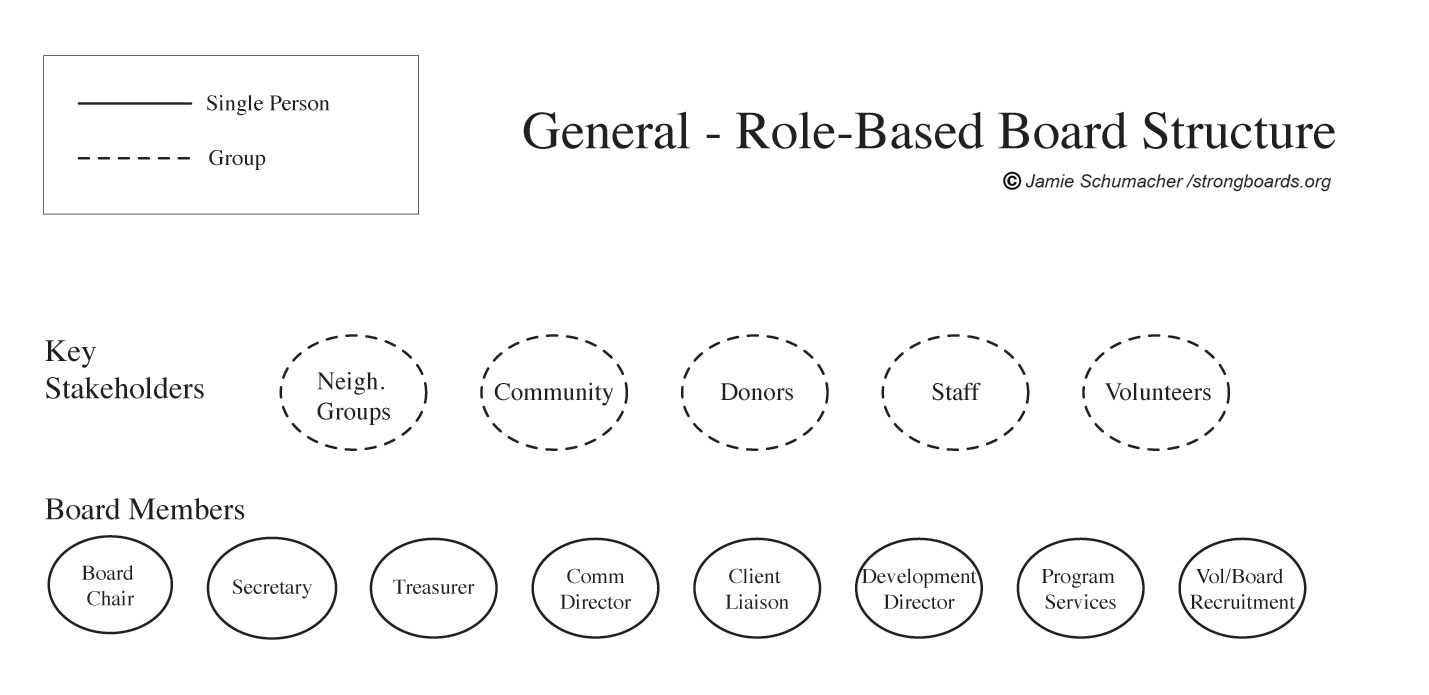So... I’m only two months late getting to my thesis “grand finale” blog post. That’s pretty horrible... all work and no blog makes J-me something something. -
Here’s a brief recap, since it’s been so long:
1) Nonprofits, especially small nonprofits, are facing hardships. 2) The traditional hierarchical model doesn’t cut it. It can leave volunteers and board members feeling disengaged and disempowered. 3) However - people keep retreating to tradition. The nonprofit industry is by no means perfect, nor is it’s traditional structure, either. 4) We need:
- Nonprofits that rely on and engage the top part of the pyramid less and the bottom part of the pyramid more.
- Nonprofits that engage their volunteers more than they use them.
- Nonprofits that network and collaborate, rather than compete.
- Nonprofits that are flatter, thinner, and as a result of all the above – more sustainable.
-
And now we come to my call:
More organizations need to move to role based, non-hierarchical shared-power board models.
-
I believe strongly effective boards will have the following characteristics:
- Non hierarchical (one member, one vote!)
- Specific roles for EACH board member (no warm bodies)
- Board chair = project manager (not a “default boss”)
- Annual board reviews compulsory
- 2 to 3 year commitments (for each role, no rotating governance positions)
- Built to transform
- Built to change
-
I posit that strong, role-based boards
- Can do more with less
- Are more effective
- Can better engage volunteers
- Can flexibly respond to changing needs
- Can retain, sustain, or grow an org.
-
The following myths are still prevalent in the nonprofit community:
- You need an E.D. to get things done.
-------Neighborhood organizations, cooperatives and collaboratives disprove this continually.
- You need paid staff to be accountable.
-------*The board* as a governing body is by default accountable! You can operate a nonprofit without paid staff forever, but you MUST have a board.
- Hierarchy is the best way to organize.
-------Apache/ Apache. Napster. Amazon - to name but a few.
- Nobody actually wants to work if they join the board.
-------People join an organization because they are drawn to it’s mission. If they aren’t in sync with a mission, why would they join? If they don’t want to engage - why would you want them to join?
- Collaboration is too idealistic; it sounds great but you can’t get anything done.
-------Individual and committee autonomy for board is often more efficient than running things through a strict hierarchy or bureaucracy.
- Consistency is better than change.
-------The definition of insanity: doing the same thing over and over again and expecting different results. Communities change and evolve; nonprofit services and programs should flex and flux as well.
- Prior board membership automatically equates to valuable experience and knowledge.
-------Not if you bring to the board bad habits or a fear of innovation and experimentation. Sometimes green is keen, especially when it comes to fresh ideas and energy from board members! -
In my experience implementing them, I’ve had the following results with Role-Based boards:
- Sustainable
- Preserves resources
- Clear expectations
- Engages board members
- Stimulates innovation and creativity
- Curbs personal “AGENDA”
- Aids board reviews and individual assessments
- Requires a greater contribution and commitment from board members.
-
Though specifics will vary from nonprofit to nonprofit, the following roles seem to be generally needed across the spectrum.
Board Chair: more of a “project manager” than default boss. Helps guide board members, rather than instruct them. Makes sure resources are allocated appropriately.
Secretary: traditional. Manages corporate documents, tracks minutes and agendas. Maintains and updates board role descriptions.
Treasurer: traditional. Helps maintain fiscal transparency and accountability. Contributes to universal board understanding of accounting practices and procedures.
Communications director: A board position dedicated to being the voice and press liaison for the organization.
Client Liaison: While most board members are focusing on the nuts and bolts of the organization, one person remains a continual and constant touch point for those being served.
Development Director: All board members should have some role in fundraising. This person oversees and plans for annual development procedures, such as overseeing a fall appeal, outgoing grants, reports, etc.
Program Services: Depending on the extent and variety of services, a person to oversee the continuity and integrity of that which an organization provides.
Volunteer/Board Recruitment: A person on the board dedicated to tracking the board role tenure list, recruiting board members and volunteers, volunteer and board orientation and training.
-
Recommended Default Committees (all with open enrollment)
- Executive or Management Committee: for strategic planning, installing grievance procedures, etc.
- Recognition Committee: donor, volunteer and board member appreciation.
- Fundraising/Development
I presented the preceding and above information last Friday at the Minnesota Council of Nonprofits’ Annual conference, along with two case studies. To my delight, the presentation was very well received. I’ve embedded a copy of the powerpoint below.
-
Realizing my personal blog is being continually sprinkled with may-or-may-not-be-boring nonprofit research, I’ve started a different blog where that can live self-contained.
Feel free to visit (or welcome, if you’re here): strongboards.org

